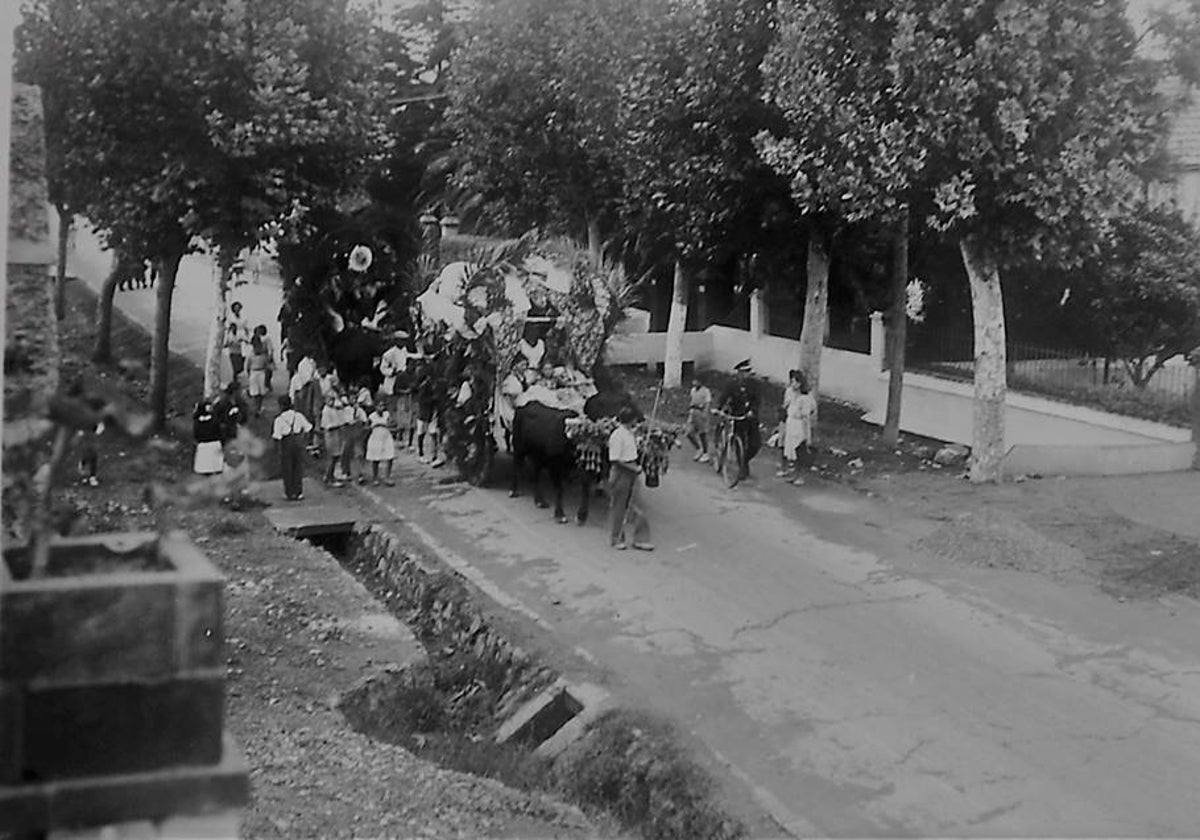Torremolinos pilgrimage is 85 years old: what is the origin of this historic festival?
The first documented 'romeria', in 1940, had nothing to do with religion, as its aim was to celebrate the coming to power of the dictator Franco
The pilgrimage (romeria) of San Miguel, patron of Torremolinos, is more than associated with local traditions and closely linked to devotion to the archangel. Apart from the religious aspect, this fiesta, of national tourist interest and a prelude to the annual fair of the Costa del Sol town, is a multitudinous celebration that concentrates thousands of people around the shrine dedicated to the protector of Torremolinos, in Los Pinares.
However, although the fervour for San Miguel goes back a long way, as the president of the brotherhood, Salvador Vallejo, recalls, and as demonstrated by the construction of a temple under this dedication back in 1716, the "devotional dimension" was not in the beginnings of the current pilgrimage. The chronicler of Torremolinos, Carlos Blanco, states in one of his works that the first documented evidence of this festive gathering makes it clear that the first time it was organised, in a format similar to today's, was in 1940, 85 years ago.
"It took place on 1 October 1940 (Tuesday, a bank holiday), as part of the festivities held in Torremolinos and the rest of Spain in commemoration of the investiture of Franco as head of state a year earlier, on 1 October 1939," says Blanco.
On the municipal border with Benalmádena
The setting was not the same either, as the concentration of people was planned for the Fuente de la Salud, on the border with Benalmádena. In the early years it had the nickname, Blanco points out, of Gran Romería and also of Gran Fiesta Campera. It was not until August 1950 that the pilgrimage officially joined San Miguel. In addition, another 26 years had to pass, until 1976, for the brotherhood of the patron saint to be constituted, which is already thinking about its 50th anniversary, as its leader points out.
Although there was already an entity in charge of the spiritual aspect of this celebration, the organisation of the fiesta, with all that it entails, such as the route through the streets of the municipality with decorated carts and floats, is the responsibility of the town hall.
Growth and hermitage
Sebastián Lara, president of the peña 'La Güena Gente de Torremolinos', a group that is involved in the pilgrimage due to its active participation, points out that, in the 1970s, San Miguel began a boom that coincided with the growth of the population itself, still a district of Malaga at that time. And in this sustained evolution, a key moment came with the construction of the chapel, which, in turn, had to do with the independence of Torremolinos itself.
The work on the place of worship, inaugurated on 8 September 1996, as the chronicler Carlos Blanco also reports in various publications, was paid for with contributions from individuals and entities, including the ‘pro-autonomy board’, whose segregation from Malaga was published in the official gazette of the regional government in 1988, precisely on the day of San Miguel. "Here in Torremolinos, everything is connected," reflects the president of the patron's brotherhood.


Comentar es una ventaja exclusiva para registrados
¿Ya eres registrado?
Inicia sesiónNecesitas ser suscriptor para poder responder.
Necesitas ser suscriptor para poder votar.